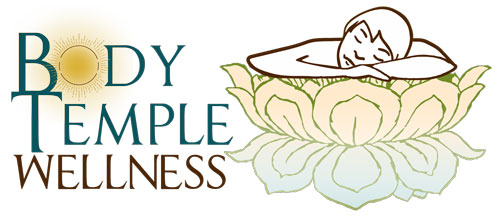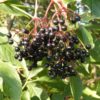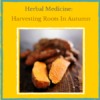Autumn, Blog, Harvest, Herbalist, herbs, home remedies, Pacific Northwest, Permaculture, practical skills, Self- Reliance, Transition, Uncategorized
Wild Harvesting Herbal Medicine
I’m taking a moment here to address the harvesting of herbs. Why? Because there is a lot to consider beyond our personal needs in practicing holistic medicine. When we harvest herbs, we assume a role in the ecosystem and leave an environmental impact. We have choice as to how much of an impact and a responsibility to the future of those plants and that space. I do not take this responsibility lightly and so I hope to encourage you to use sustainable practices and to only support businesses that use sustainable practices as you fulfill your need for holistic medicine and home remedies.
Where to Harvest
While most of the herbs I harvest are on my own farm and are cultivated using organic practices, I sometimes wild harvest in other areas. When I do this I have additional considerations such as whether the area is clean or if it is polluted. It is also important to know if the plant is a bio-accumulator or not. Bio-accumulators are plants that collect minerals and other substances like heavy metals and pollutants. This makes roadsides a really bad place to gather from as they have an excess of lead from the days of leaded fuel. Harvesting anything from these kind of places would be bad but it would be especially bad to harvest things like comfrey root. Look for areas that are away from parking strips, roads and industrial areas. If you are going to harvest on private property, always ask permission.
Be Safe
In addition, if you are harvesting in the forest, please do be aware of hunters. Wear clothing that will identify you as a human. Be safe, be visible and by all means, either go in pairs or let someone know where you are going.
Know The Plant
It is important to know the lifecycle of any plant you are harvesting and how it reproduces. Does it spread through runners, rhizomes or seed? Knowing how a plant reproduces before harvesting helps you understand and protect the plant from over-harvesting.
Another consideration, one which is practiced by many indigenous cultures, is to find the largest (grandmother) plant and to ask it permission to harvest. Another important thing is to always harvest with a grateful attitude as connection to and gifts from the earth are not to be taken lightly.
Etiquette
Now, when you are wild harvesting, there are a few other points of etiquette that you should follow. Firstly, leave no trace. Walk lightly, do not disturb any more than needed. When you harvest, say Oregon Grape root, take the leaves and stems and tuck them under plants in the nearby area so that no one can tell you harvested there. The remaining plant parts will go back to the earth to nourish the forest floor and the ecosystem will be kept in better balance.
Also, don;t be greedy. Take only what you will use.
The tools I use when harvesting vary with the different plants and the parts that I need. I often use a knife, scissors and or a trowel. Reclaimed plastic shopping bags are light and easy to carry as they compact in to small spaces. However, I do like to keep my hands free so wearing a bag like that used for harvesting apples or a harvest basket makes for a perfect choice. If the herb or plant material being harvested is fragile, like a mushroom, I like to use a shallow basket.
Tools of the Trade
Once harvested, I process the herbs immediately, especially roots. Once roots dry, they can be nearly impossible to process. If I am processing roots, I rinse them and rub the loose dirt off with my hands and then chop them or snip them in to one-inch pieces. I then process the root in whatever manner needed. This might include dehydration, a decoction or some other method.
Sage Advice
Process your herbs immediately after harvest. This means, chop, dry, infuse or whatever without hesitating.
Whatever you do, label your harvest immediately. Trust me, one root can look very similar to another. It is always best to label everything, immediately, during every step of the way.
Join The Community
As always, comment below and tell us your experience in harvesting herbs and making herbal medicine. We would love to hear from you and I am sure our readers will too.
Share our blog. Join the community. Inspire others.









Leave a reply